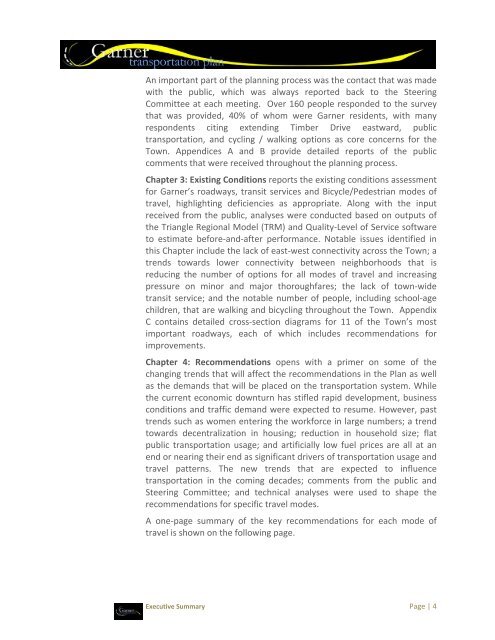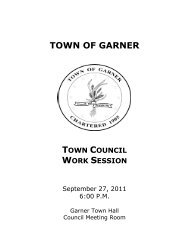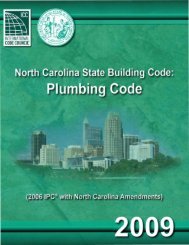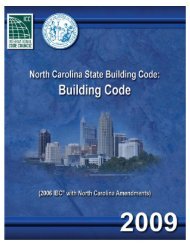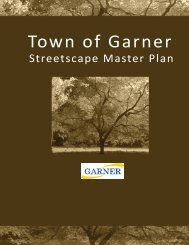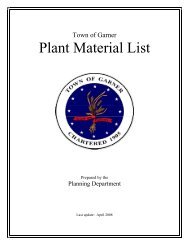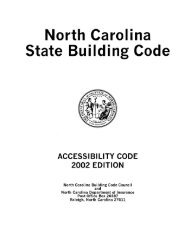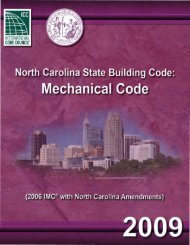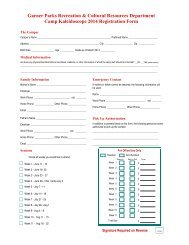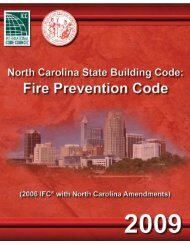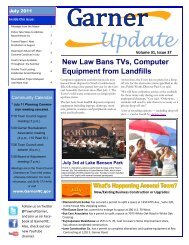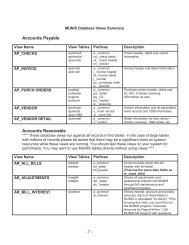Transportation Plan - Town of Garner
Transportation Plan - Town of Garner
Transportation Plan - Town of Garner
Create successful ePaper yourself
Turn your PDF publications into a flip-book with our unique Google optimized e-Paper software.
An important part <strong>of</strong> the planning process was the contact that was made<br />
with the public, which was always reported back to the Steering<br />
Committee at each meeting. Over 160 people responded to the survey<br />
that was provided, 40% <strong>of</strong> whom were <strong>Garner</strong> residents, with many<br />
respondents citing extending Timber Drive eastward, public<br />
transportation, and cycling / walking options as core concerns for the<br />
<strong>Town</strong>. Appendices A and B provide detailed reports <strong>of</strong> the public<br />
comments that were received throughout the planning process.<br />
Chapter 3: Existing Conditions reports the existing conditions assessment<br />
for <strong>Garner</strong>’s roadways, transit services and Bicycle/Pedestrian modes <strong>of</strong><br />
travel, highlighting deficiencies as appropriate. Along with the input<br />
received from the public, analyses were conducted based on outputs <strong>of</strong><br />
the Triangle Regional Model (TRM) and Quality‐Level <strong>of</strong> Service s<strong>of</strong>tware<br />
to estimate before‐and‐after performance. Notable issues identified in<br />
this Chapter include the lack <strong>of</strong> east‐west connectivity across the <strong>Town</strong>; a<br />
trends towards lower connectivity between neighborhoods that is<br />
reducing the number <strong>of</strong> options for all modes <strong>of</strong> travel and increasing<br />
pressure on minor and major thoroughfares; the lack <strong>of</strong> town‐wide<br />
transit service; and the notable number <strong>of</strong> people, including school‐age<br />
children, that are walking and bicycling throughout the <strong>Town</strong>. Appendix<br />
C contains detailed cross‐section diagrams for 11 <strong>of</strong> the <strong>Town</strong>’s most<br />
important roadways, each <strong>of</strong> which includes recommendations for<br />
improvements.<br />
Chapter 4: Recommendations opens with a primer on some <strong>of</strong> the<br />
changing trends that will affect the recommendations in the <strong>Plan</strong> as well<br />
as the demands that will be placed on the transportation system. While<br />
the current economic downturn has stifled rapid development, business<br />
conditions and traffic demand were expected to resume. However, past<br />
trends such as women entering the workforce in large numbers; a trend<br />
towards decentralization in housing; reduction in household size; flat<br />
public transportation usage; and artificially low fuel prices are all at an<br />
end or nearing their end as significant drivers <strong>of</strong> transportation usage and<br />
travel patterns. The new trends that are expected to influence<br />
transportation in the coming decades; comments from the public and<br />
Steering Committee; and technical analyses were used to shape the<br />
recommendations for specific travel modes.<br />
A one‐page summary <strong>of</strong> the key recommendations for each mode <strong>of</strong><br />
travel is shown on the following page.<br />
Executive Summary Page | 4


